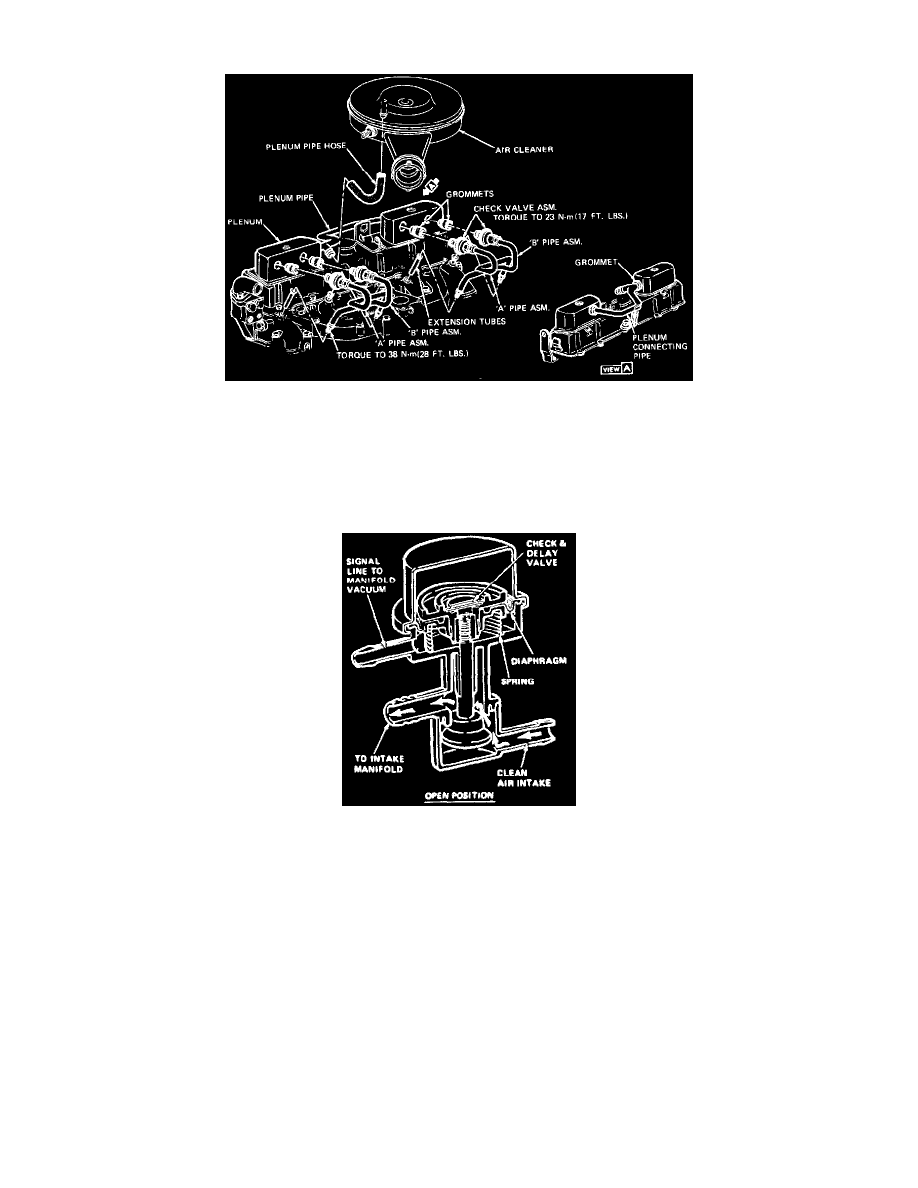Blazer 4WD L6-250 4.1L VIN D 2-bbl (1982)

Pulsair Valve: Description and Operation
Fig. 35 - PAIR System Hose Routing
The PAIR system--Fig 35, used on some vehicles consists of four pulse air-check valves connected to the exhaust ports.
As the engine fires positive and negative pressure pulses are created in the exhaust system.
-
Negative pressure pulses pull fresh air through the check valves into the exhaust system.
-
Positive pressure pulses close the check valves, preventing exhaust gas from entering the fresh air supply lines.
Fig. 6 - Deceleration Valve
Deceration Valve
The deceleration valve--Fig 6--used on some 1981-82 vehicles--prevents backfiring in the exhaust system during deceleration by supplying the
additional oxygen needed to burn the fuel supplied.
-
When the throttle valve closes on deceleration manifold vacuum increases abruptly, the pressure differential on the diaphragm overcomes
spring tension, opening the valve and bleeding air into the intake manifold.
-
Air trapped in the chamber above the vacuum diaphragm will be bled at a calibrated rate through the delay valve portion of the integral check
and delay valve, reducing vacuum on the diaphragm.
-
When vacuum on the diaphragm and spring tension become equal, the valve closes and cuts off air supply to the intake manifold.
-
The check valve portion of the check and delay valve provides a rapid balancing of chamber pressure when there is a sudden decrease in
vacuum during acceleration.
